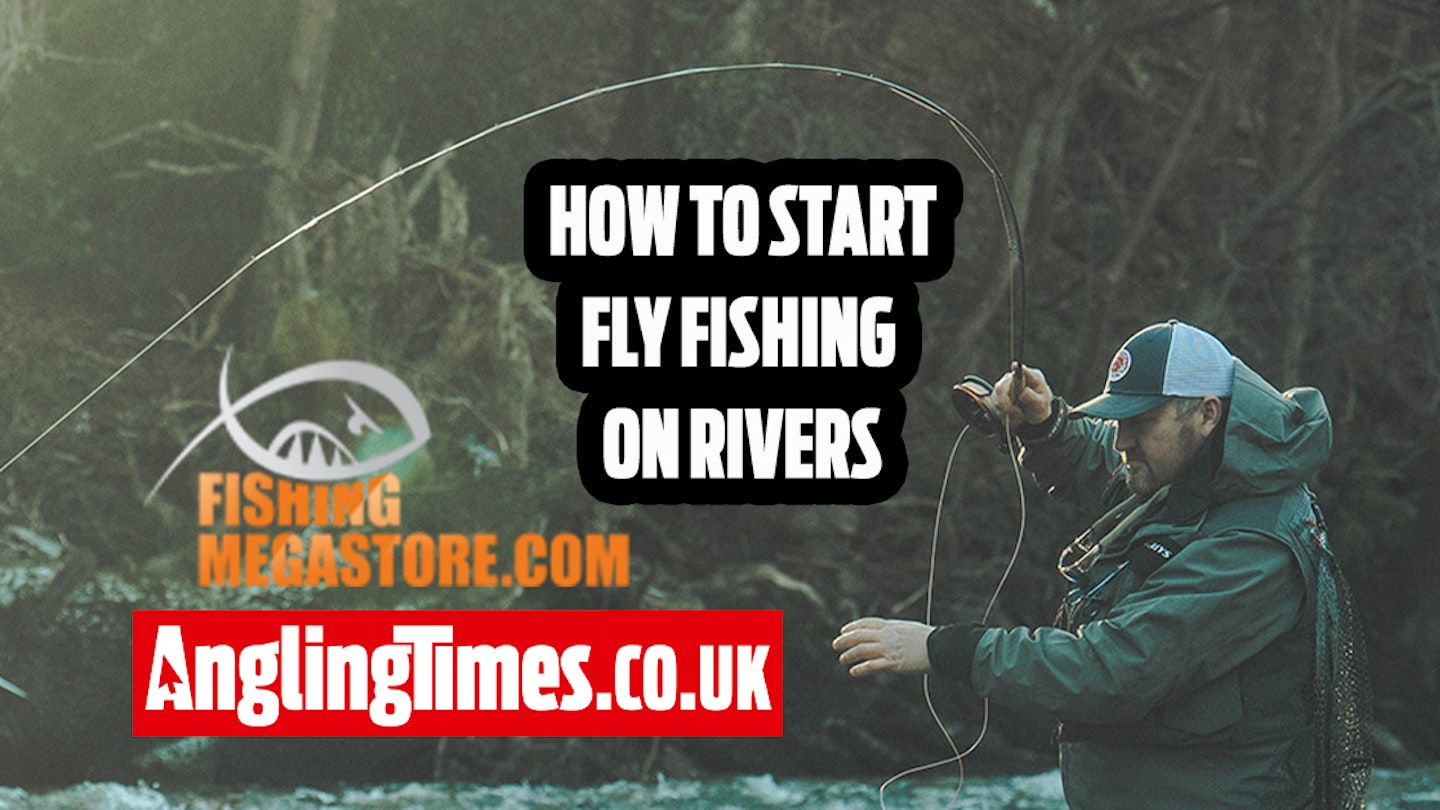THIS ARTICLE IS PRODUCED IN PARTNERSHIP WITH GLASGOW ANGLING CENTRE.
March 15th is a sad day for anglers across Britain, as the curtain falls on the river fishing season.
Many pack their rods away until June 16th, dreaming of a day on running water. But what if we told you there’s a way to stay on the rivers this spring and enjoy them at their very best?
The solution is simple – pick up a fly rod! We know what you’re thinking – isn’t that exclusive and expensive? Whilst fly fishing was once an elitist pursuit, today it’s open to all - affordable and accessible nationwide.
What’s more, it’s one of the most enjoyable ways you can catch fish. Clunky tackle boxes are replaced with lightweight vests, allowing you can wander a remote river with a featherweight rod, bathed in spring sunshine.
Many see fly fishing as overcomplicated, but it’s much simpler than many types of coarse fishing. One of the most enjoyable methods of all – the dry fly – is remarkably easy to set up and a great tactic for beginners.
RATHER LEARN ANOTHER FISHING METHOD? HERE'S HOW TO GET STARTED CARP FISHING.
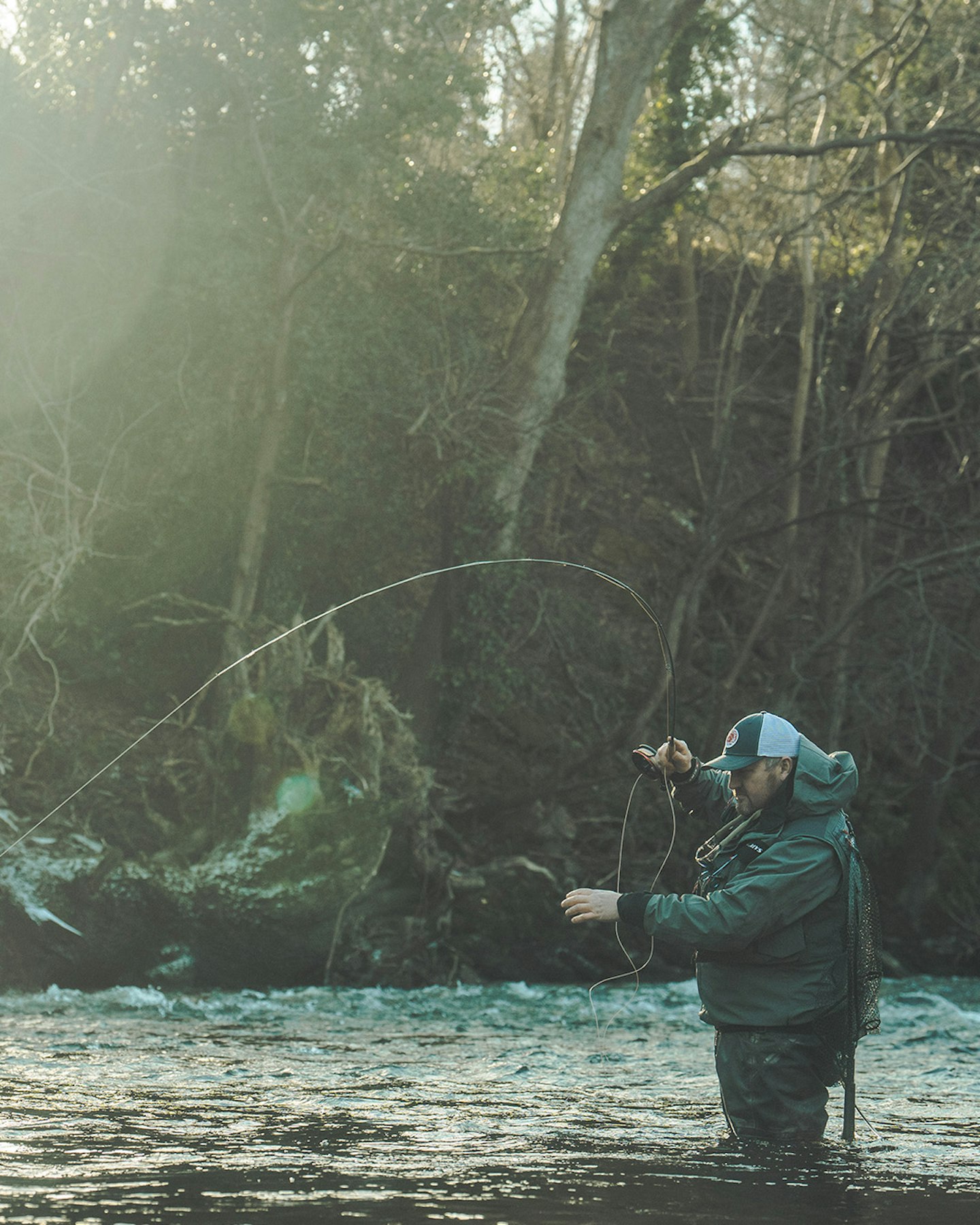
GET THE RIGHT KIT
First things first, you need to get yourself some tackle. Whilst fly rods are generally more expensive than coarse fishing ones, you don’t need anything fancy to get started.
There are brilliant starter kits on the market these days, with rods, reels, lines, leaders, tippet, and flies included. Add a bottle of Gink – fly floatant – and you’re away.
Best value fly fishing starter kit
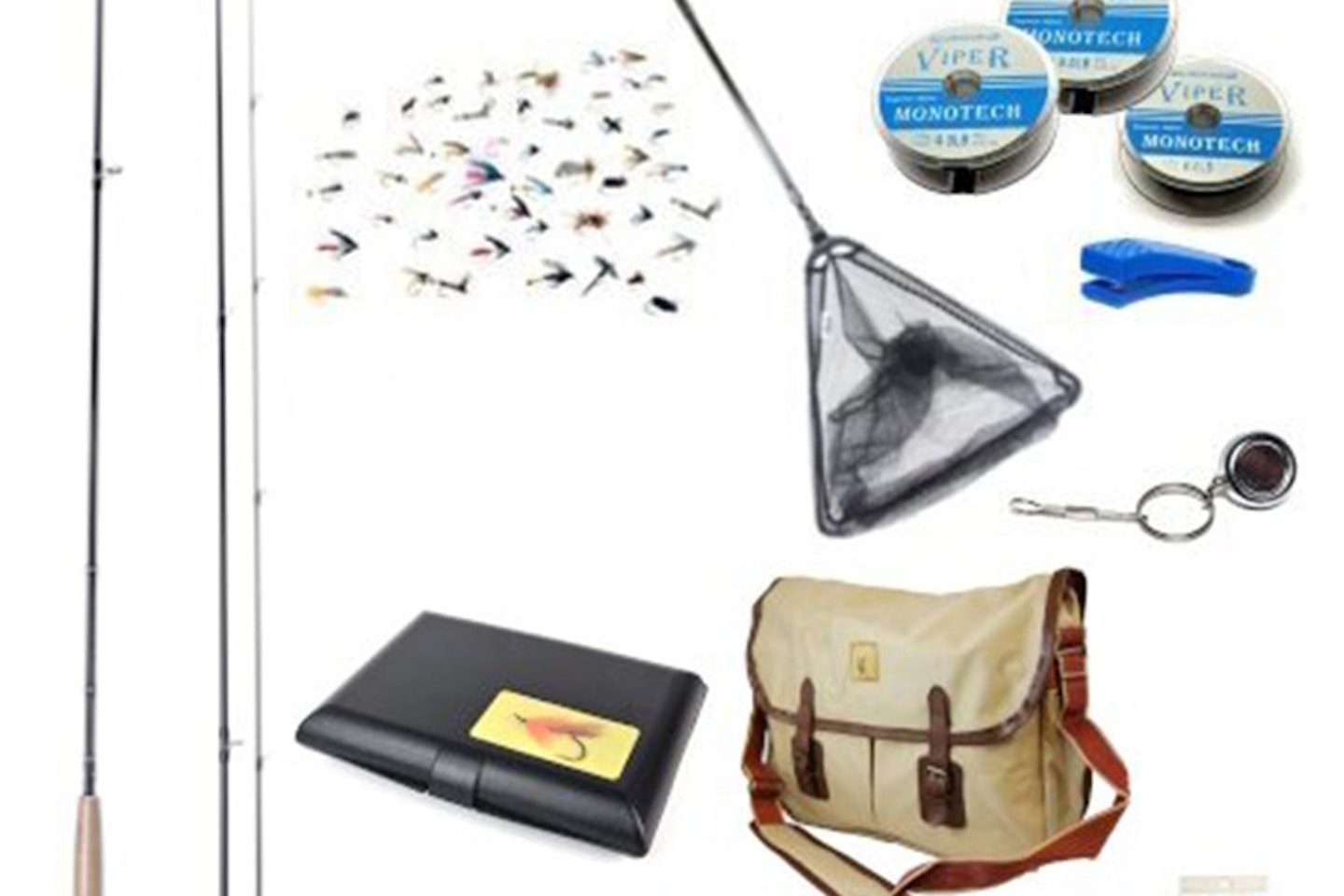
www.fishingmegastore.com
A popular starter kit that’s ideal for a range of applications, including a versatile 9ft 6wt rod, net, bag and all the bits you need.
Pros
- Everything you need to get started fly fishing.
- Superb price to just give it a go.
Cons
- Rod might be a little heavy for smaller river work.
A rod between eight and nine feet in length is ideal for most river work. Its ‘weight’ signifies line it should be matched with. The higher the number, the heavier the line, and the heavier the applications are that the rod is used for. For general river work, something around a 5wt is ideal.
Best quality starter fly fishing kit

www.fishingmegastore.com
Airflo’s ready-to-go starter kits contain every essential piece of equipment for beginners or anglers returning to the sport.
The 8ft6 4/5wt rod would be ideal for river work. The kit includes a 4-piece carbon fly rod, a preloaded graphite fly reel, floating line and backing, a protective rod tube, tapered mono leader, a fly box & 3 flies, plus sunglasses.
Pros
- Superb starter kit.
- Glasses are a nice touch.
Cons
- No net included.
To your reel, if it’s not already set-up, you should add some backing which will be followed by your fly line.
Best starter fly fishing reel
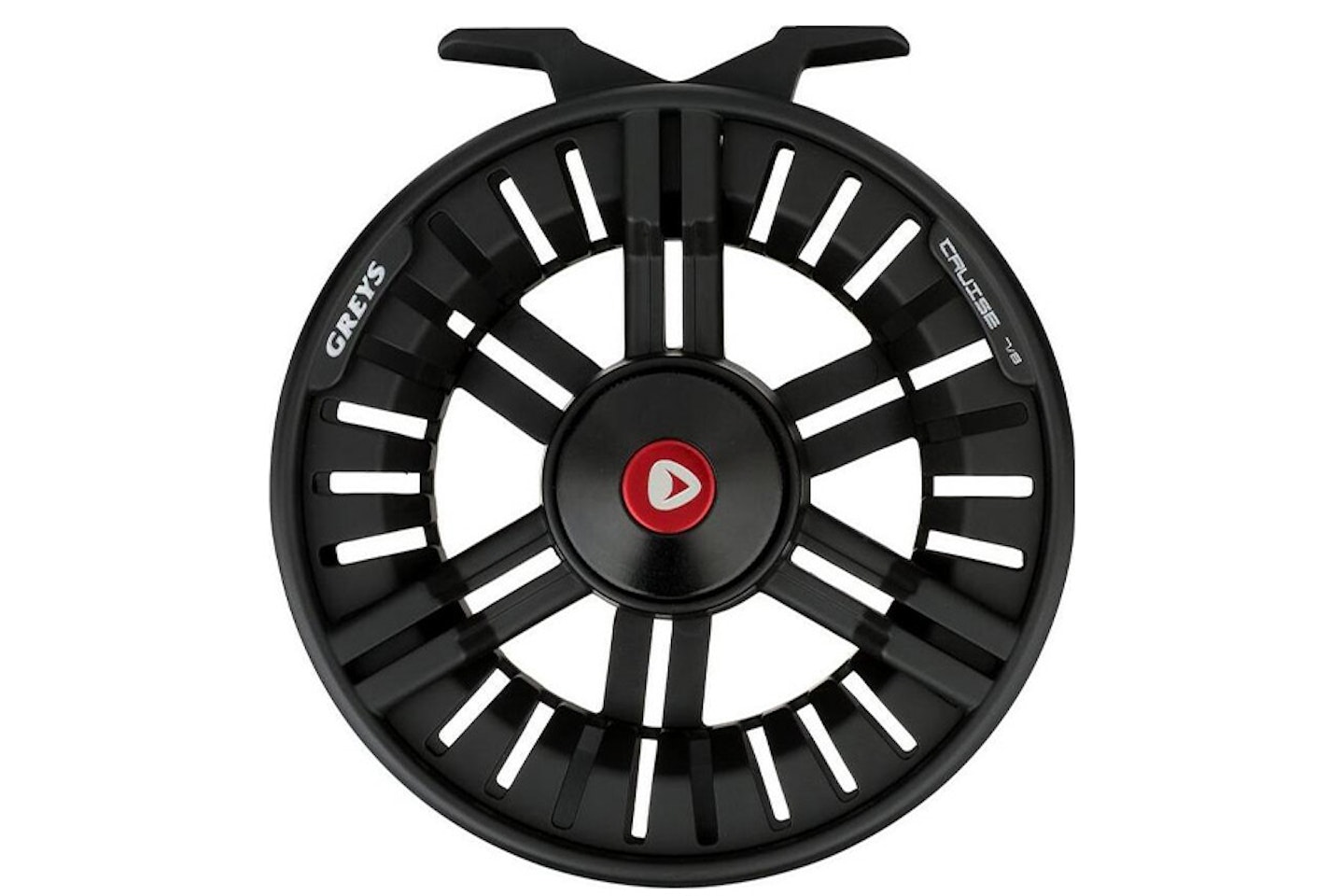
www.fishingmegastore.com
A superb addition to the Greys fly reel line up, the Cruise offers disc drag performance , large arbour line pick up and a stunning, full di-cast aluminium design at an exceptional price.
- High quality di-cast, machine finished construction
- Rulon disc drag system
- Modern large arbor industrial design
- Supplied with a reel pouch
Pros
- Superb design.
- Reel pouch keeps product in good condition.
Cons
- No line included.
Best value starter fly fishing reel
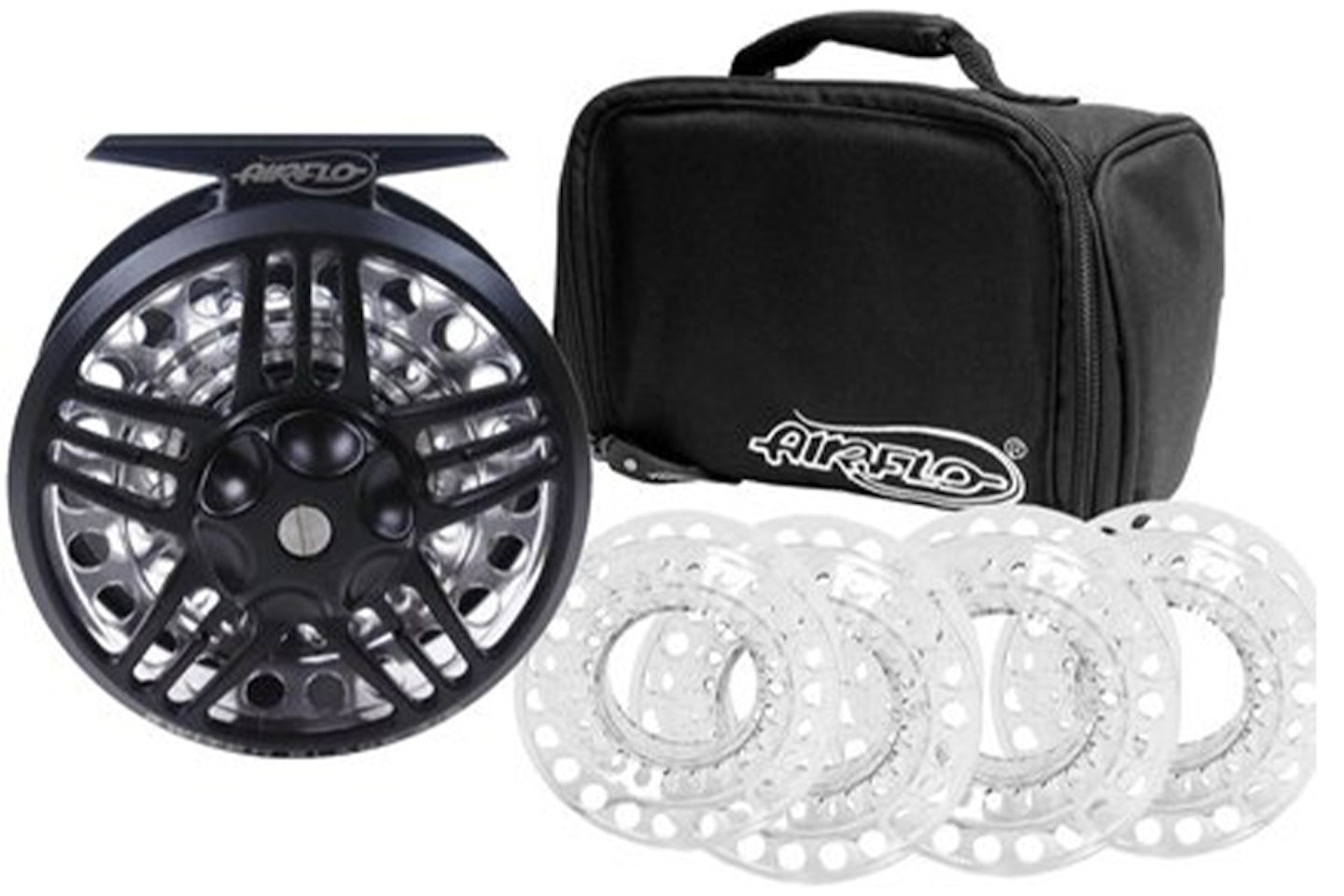
www.fishingmegastore.com
The Switch Black offers incredible value for money. Built to the same design as the Switch Pro, this die-cast reel offers the same stunning features at a truly unbelievable price.
Available in two sizes, each reel comes with 4 additional clear spare spools and a custom fit reel bag.
Pros
- Four spare spools included.
- Reel bag keeps product in good condition.
Cons
- Not loaded with line.
To the end of your fly line, attach a tapered leader. Something around 9ft is a great starting point, and whilst they may not look much, leaders are pivotal to catching fish. Their taper means they’ll unfold on the cast, delivering your fly to its intended target.
Best beginner fly fishing lines
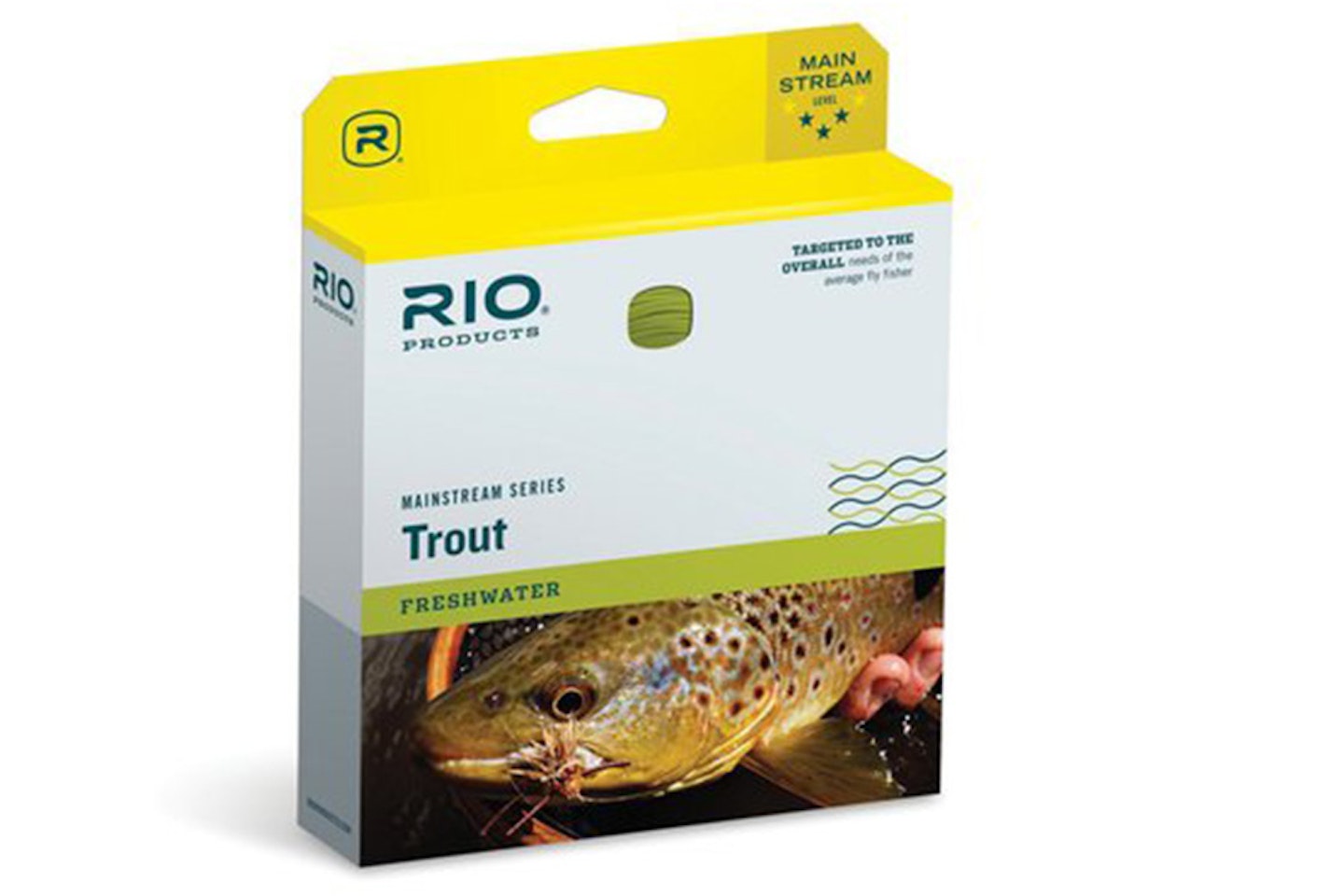
www.fishingmegastore.com
Affordable, high-performance fly lines that are designed to meet the needs of the average fly fisher.
• Slightly heavier, easy casting lines for a multitude of situations
• Short, powerful front taper for good presentation and turnover
• Made in the RIO production facility to their exacting standards
Pros
- Easy lines to cast.
- Front taper for good presentation.
Cons
- A good all-rounder but not the best for ultra-finesse work.
A durable and buoyant fly pattern is a great starting bet, with Klinkhammers in various sizes and colours a proven catcher.
Whilst we’re not going to explain how to cast here, there are fantastic videos on YouTube showing how it’s done. Put in the hours practicing before you hit the river.
Best fly box

www.fishingmegastore.com
Being organised is key to staying lightweight and mobile on the bank, and this double-sided fly box from Stillwater allows you to do just that. It’s also waterproof – crucial when wading.
Pros
- Can hold twice as many flies as normal.
- Waterproof.
Cons
- No flies included.
Best fly fishing accessories

www.fishingmegastore.com
This kit has everything you need to stock up your fishing waistcoat for a day on the bank.
- Cortland Leader Straightener
- Cortland Tippet Retainer
- Cortland Magnetic Net Release
- Stillwater Double Zinger Fly Magnet
- Stillwater 5in Straight Forceps
- Stillwater Nipper Stainless Steel
- Stillwater Floatant Bottle Holder
- Lureflash Deluxe Wool Fly Patch
Pros
- Full of useful gadgets for fly fishing.
- Stock up your waistcoat at a budget price.
Cons
- A loaded fly box would complete the set, but we are being greedy!
WATCH AND LEARN
For most river dry fly fishing, you’ll be fishing upstream. It’s therefore crucial that, once you’ve made a cast, you stay in touch with the fly as it comes back towards you. This is done by retrieving slack line. You’ll know something’s wrong if the fly starts to drag across the surface. Much like trotting a float, you want the fly to drift as naturally as possible, achieving what’s known as a ‘drag-free drift’. Achieve this, and you’ve every chance of a take.
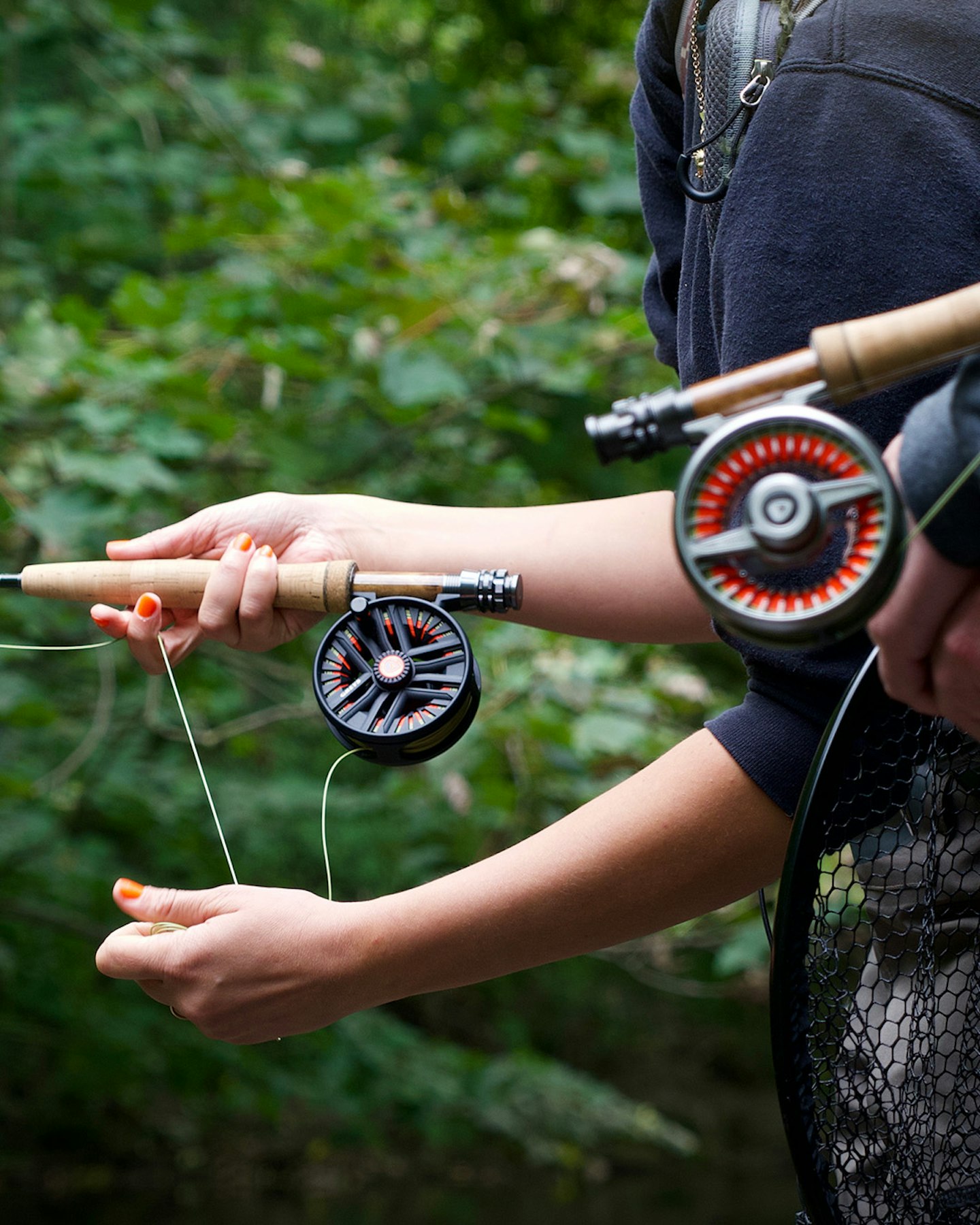
One of the best bits of advice or any beginner is to slow down. If you find an appealing bit of water, sit on the bank and watch. Trout can be found pretty much anywhere, with overhanging trees, current seams and boulders particular favourites.
If you see a fish rise, don’t chuck a fly straight at it. How often is it rising? Is it moving around or sitting in one spot? What is it taking? Whilst you don’t have to be an entomologist, get an idea of the rough size and shape of the flies on the water, and search your fly box for a rough match.
Whilst some fish can be picky, fly anglers generally value presentation over a specific pattern, so focus on not spooking the fish and getting a good drift over it.
Best fly fishing line
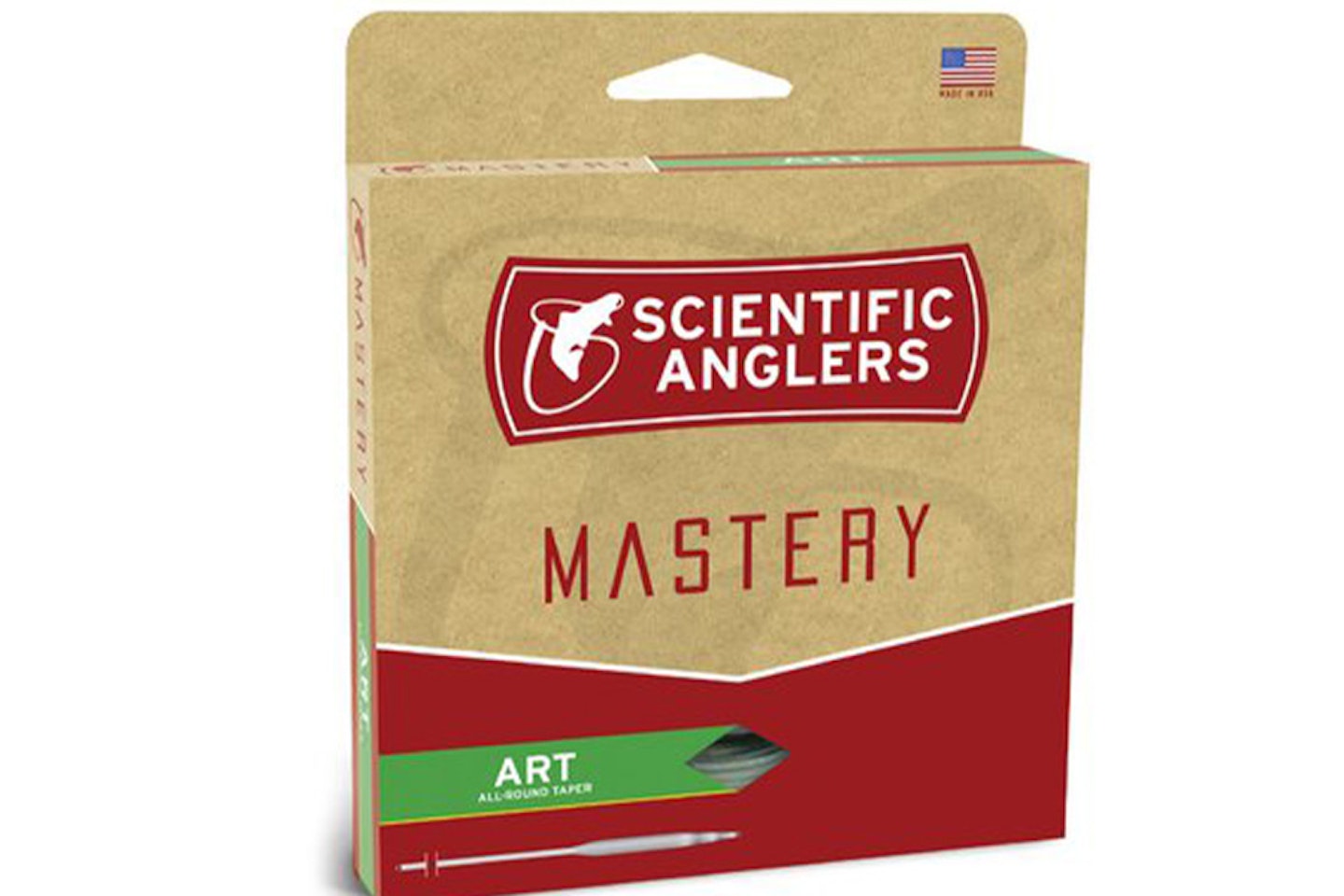
www.fishingmegastore.com
A top-quality fly line can transform your fishing, and Scientific Anglers Mastery ART is just that. It’s a true all-rounder that’s perfect on small rivers and streams.
- All round taper for fine presentations
- Built a half-size heavy to load rods easier and turn over long leaders
- Excellent with dry flies, nymphs, and lightweight streamers
- Floating texture on tip for improve floating and easy pickup
- Advanced Shooting Technology (AST) for farther casts, high floating and cleaner fly line
- Braided multifilament core
- SA ID – SA MS ART WF X F (X = line weight)
- Colours: bamboo / dark olive / camouflage tip
- Total length: 27,5 m
Pros
- Great for finesse fishing.
- Superb for casting.
Cons
- Quality comes at a higher price.
GO ‘PROSPECTING’
If there are no fish rising, don’t worry. You can employ a method known as ‘prospecting’, which involves searching fishy-looking water with explorative casts. You’ll be amazed how many fish hit the fly out of the blue!
If you still can’t get a take, try a method known as ‘the duo’ or ‘klink and dink’. This involves tying a length of tippet to the bend of your dry fly hook and attaching a nymph. This length of tippet should be roughly 1.5x the depth of water. For example, in a swim that’s 2ft deep, use 3ft of tippet. Fish this on a fairly short line, making regular casts and searching the swim thoroughly. Takes on the nymph will be indicated by the dry fly dipping, just as a floatwould. Fish will rise to the dry fly, too.
Best beginner fly set

www.fishingmegastore.com
These great-value packs come in a range of options, with the Klink N‘ Dink and River Dries selections perfect for beginners.
Includes:
A sturdy black moulded Large Devlin fly box - perfectly pocket sized measuring 16 x 11cm to keep your flies in place with it’s high density plastazote foam lining.
50 x Wet Flies: having the right wet fly while fly-fishing is crucial. This is a great assortment of many of the most popular patterns.
50 x Nymphs: a great variety of nymphs that are present throughout the year, so no matter what time of year you’re fishing, you can rest assured you have a selection of effective patterns
50 x Dry Flies: a great start-up collection of river dry flies. Selected with the beginner in mind but also a great and easy selection for the regular river angler.
Pros
- Superb selection of flies.
- Sturdy fly box.
Cons
- Missing some stillwater lure patterns.
10.
Gink Floatant
Best fly floatant
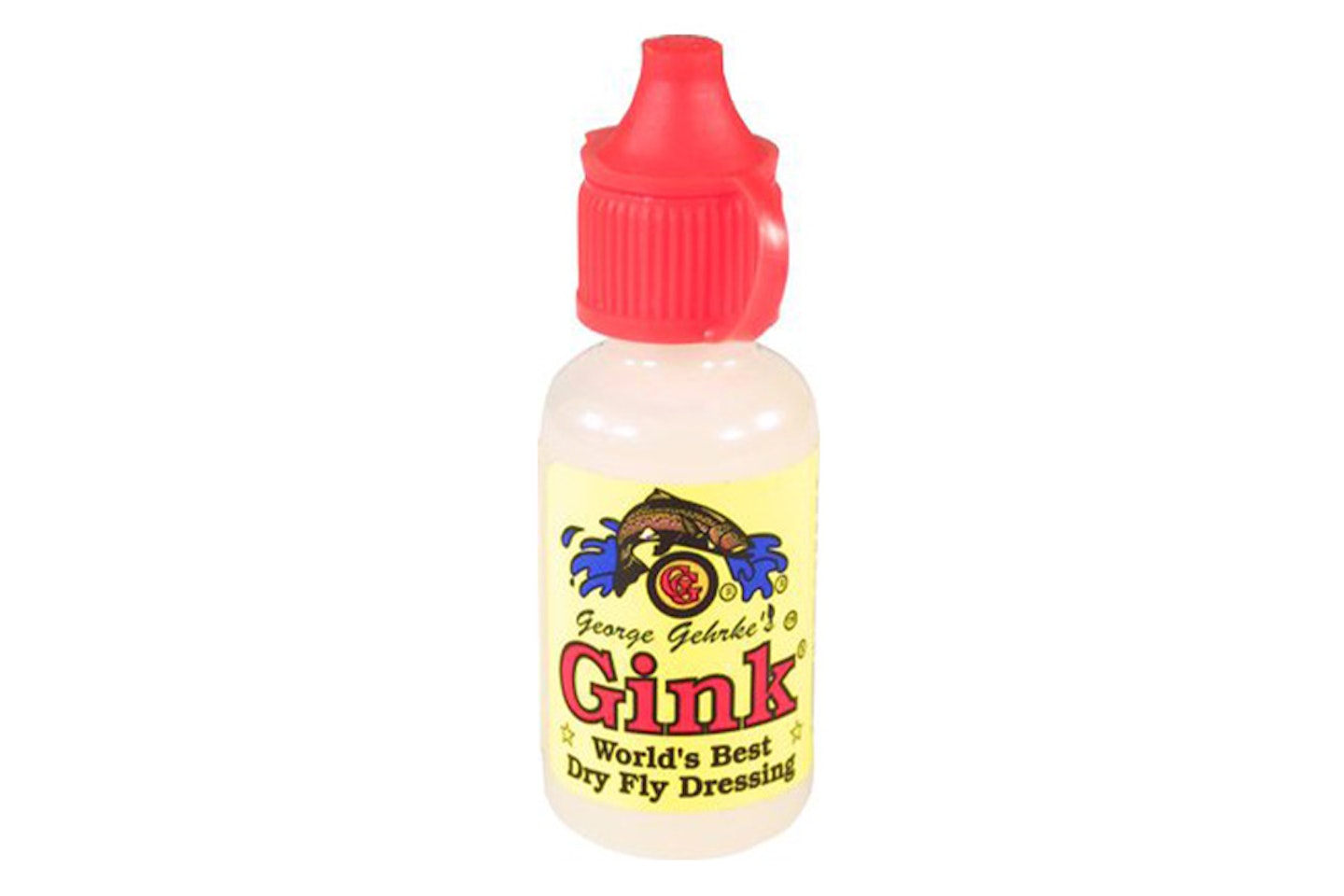
www.fishingmegastore.com
An absolute essential, this has been popular since the 90s and it’s still the number one choice for keeping your dry flies floating high and fishing effectively. Often imitated never bettered.
- Will not cake hackles
- Easy to apply
- The gel formulation minimizes waste
- A drop will keep your fly a float even in fast water
Pros
- Essential for dry fly fishing.
- Easy to use.
Cons
- Not suitable for all fly materials and easy to overfill.
So, what are you waiting for? Get on the rivers this spring and enjoy a form of fishing that’s captivated anglers for a millennia.
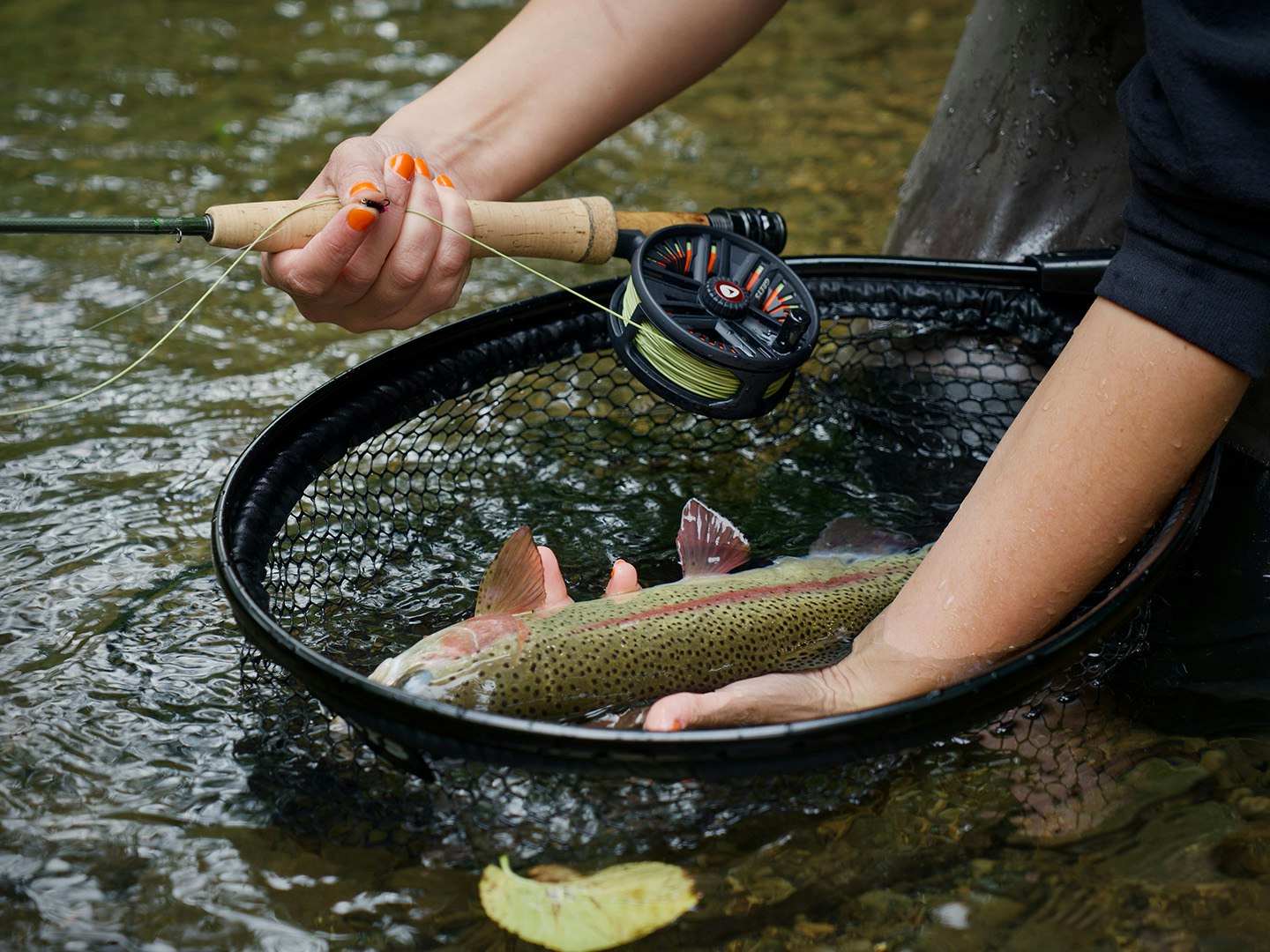
Author and Angling Times News Editor Freddie Sandford loves his river fishing. He spends spring and summer trout fishing before turning his attentions to coarse species like chub and roach in the winter.
